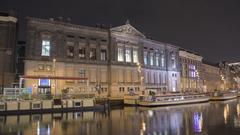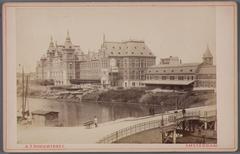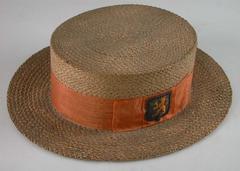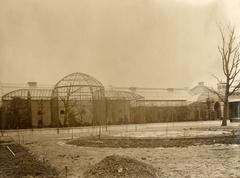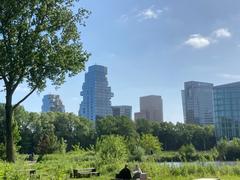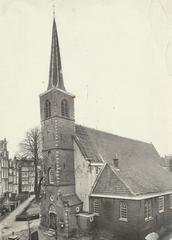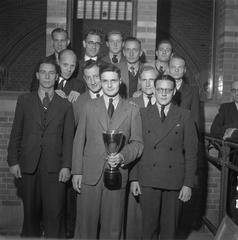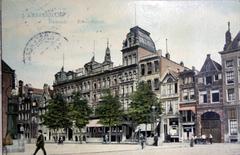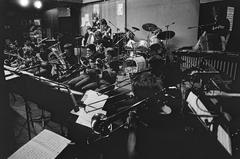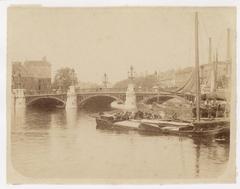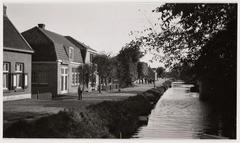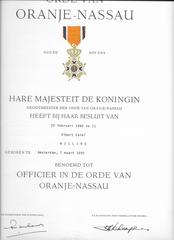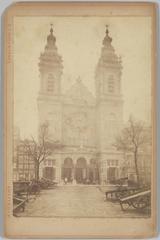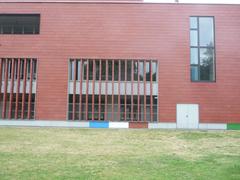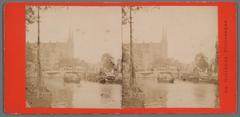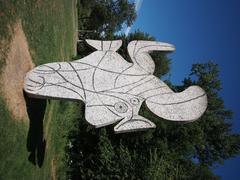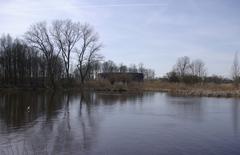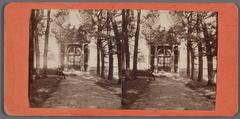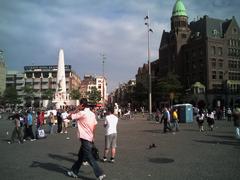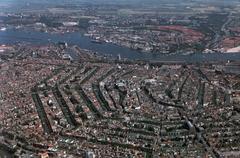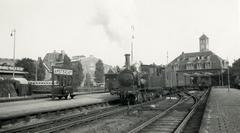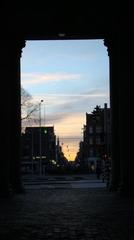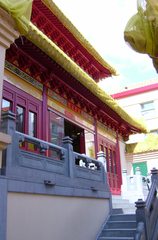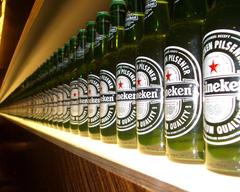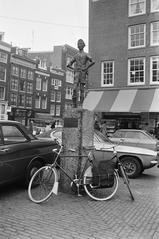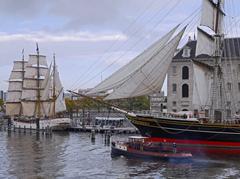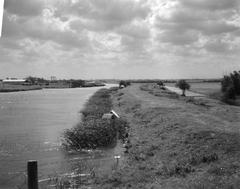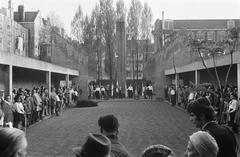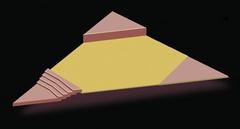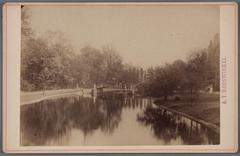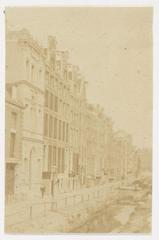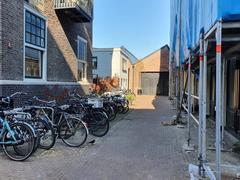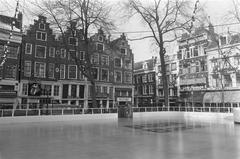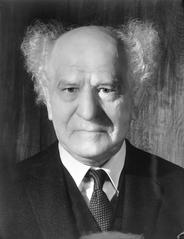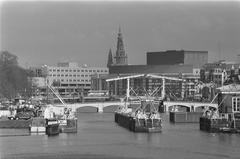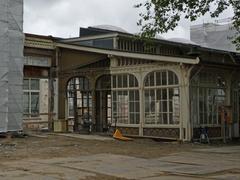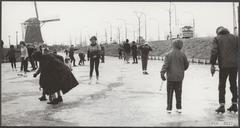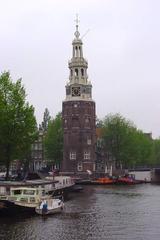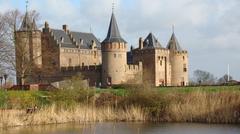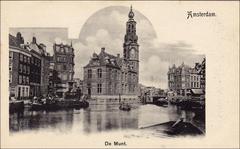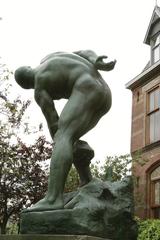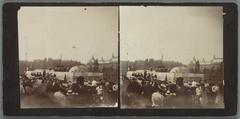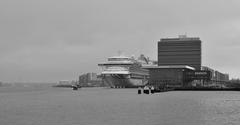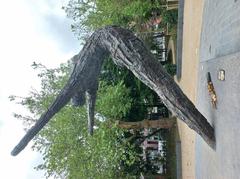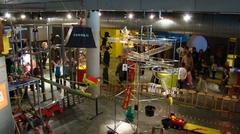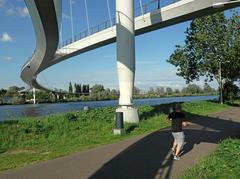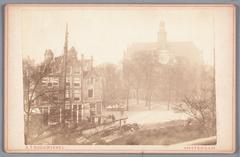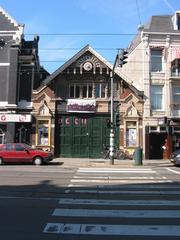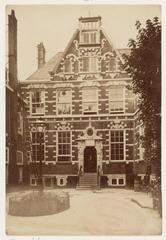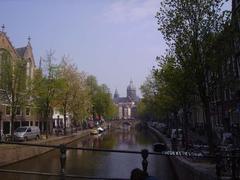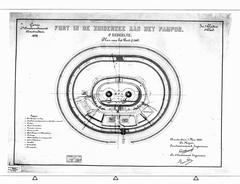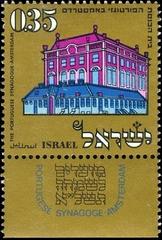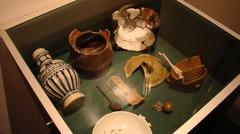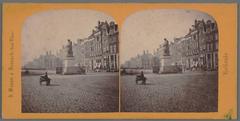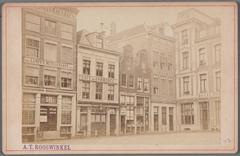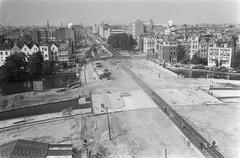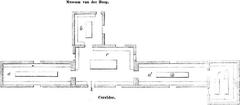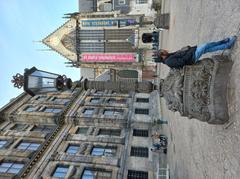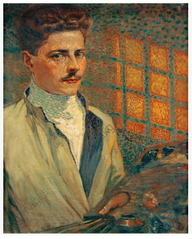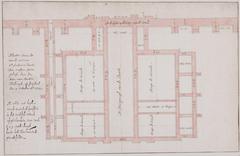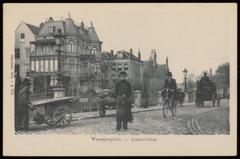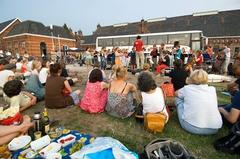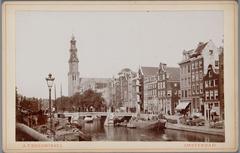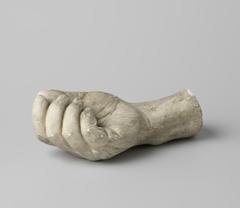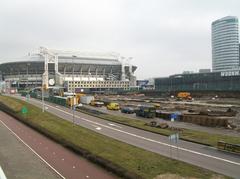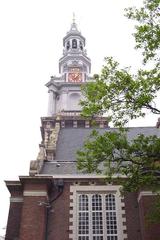
Python Bridge Amsterdam: Visiting Hours, Tickets, and Travel Guide
Date: 04/07/2025
Introduction: The Python Bridge in Amsterdam
The Python Bridge (Dutch: Pythonbrug), also officially known as the Hoge Brug (High Bridge), is a celebrated modern landmark in Amsterdam’s Eastern Docklands (Oostelijk Havengebied). Designed by Adriaan Geuze of West 8 and completed in 2001, this pedestrian bridge connects the innovative residential islands of Borneo and Sporenburg, representing the city’s transformation from an industrial harbor to a vibrant urban neighborhood. Its vivid red, serpentine steel structure not only provides a unique crossing experience and panoramic views but also stands as a testament to Amsterdam’s commitment to architectural creativity and urban renewal (Wikipedia - Pythonbrug, Bonjour Amsterdam).
This detailed guide covers the history, architecture, visitor information, travel tips, and nearby attractions to help you make the most of your visit to the Python Bridge.
Table of Contents
- Introduction
- Historical Background and Urban Context
- Design and Structural Features
- Visitor Information
- Cultural and Social Impact
- Practical Tips and Frequently Asked Questions
- Summary and Recommendations
- Sources and Further Reading
Historical Background and Urban Context
Urban Renewal: The Eastern Docklands
The Python Bridge is a product of Amsterdam’s ambitious late 20th-century urban renewal, which revitalized the former industrial Eastern Docklands into a lively residential and cultural hub. The redevelopment of Borneo and Sporenburg islands prioritized innovative architecture, sustainable living, and integration with historic canals—qualities epitomized by the Python Bridge, which links the two islands across the Spoorwegbassin canal (Wikipedia - Pythonbrug, amsterdamforvisitors.com).
Purpose and Connectivity
As the new residential developments on Borneo and Sporenburg took shape, there was a clear need for pedestrian-only infrastructure. The Python Bridge, completed in 2001, was constructed to provide safe, scenic pedestrian access over the canal, forming part of a trio of bridges (with the adjacent Lage Brug and Korte Brug) that reinforce Amsterdam’s focus on sustainable, human-centered mobility (Wikipedia - Pythonbrug).
Design and Structural Features
Architectural Vision
Adriaan Geuze and his firm West 8 designed the Python Bridge with a distinctive undulating profile—hence its name. Painted a vivid red, the bridge’s sinuous silhouette stands in bold contrast to Amsterdam’s traditional flat bridges and muted cityscape. The design is not just aesthetic: the bridge’s high central arch (offering a clearance of 9.5 meters) allows the passage of boats and enhances the panoramic views for pedestrians (Wikipedia - Pythonbrug, Creative Composites Group).
Engineering and Materials
Spanning 90–93 meters, the bridge is constructed from high-strength steel, enabling the complex wave-like geometry. The steel truss girder frame is topped with wooden planking, and its dynamically curved balustrades further accentuate the sense of movement. Artistically designed lanterns, resembling birds, add to its playful character (tripaim.com, Thrillophilia).
Visual and Symbolic Impact
The Python Bridge’s bold red color is a deliberate statement, making it a visual icon of the Docklands and symbolizing Amsterdam’s embrace of modernity and change (tripaim.com). It is a favorite subject for photographers and has received international acclaim, including the 2002 International Footbridge Award (Creative Composites Group).
Visitor Information
Accessibility and Visiting Hours
- Open 24/7: The Python Bridge is always open to the public and is free of charge.
- Pedestrian-Only: The bridge is exclusively for pedestrians. Due to steep inclines and steps, it is not suitable for wheelchairs, strollers, or cyclists. Cyclists and those with limited mobility should use the nearby Lage Brug or Aluminium Bridge (thingstodoinamsterdam.com).
Directions and Transportation
- By Tram: Tram line 26 from Amsterdam Centraal to Rietlandpark (about a 10-minute walk to the bridge).
- By Bus: Buses 48 and 65 serve the area; stops include “Borneo Eiland” or “Rietlandpark.”
- By Bike: Amsterdam’s bike-friendly streets make this an excellent destination for cyclists, who can walk their bikes across the bridge.
- By Car: Parking is limited and expensive; public transport or cycling is recommended (thingstodoinamsterdam.com, GVB).
Nearby Attractions
- Borneo and Sporenburg: Explore these neighborhoods’ modern architecture and waterfront promenades.
- Lloyd Hotel and KNSM Island: Unique hotels and contemporary architecture.
- Waterfront Cafés and Parks: Ideal spots for refreshments and relaxing.
- Other Amsterdam Landmarks: A short ride or walk brings you to Amsterdam Central Station, Dam Square, Basilica of St. Nicholas, and the Maritime Museum (thingstodoinamsterdam.com).
Best Times to Visit and Photography Tips
- Golden Hour: Early morning and late afternoon provide the best natural light and fewer crowds.
- Seasonal Highlights: Spring and summer are lively; autumn brings colorful foliage; winter offers dramatic contrasts (but the bridge can be slippery).
- Nighttime: The bridge’s curves and lanterns are beautifully illuminated after dark.
- Photography: Use alt tags like “Python Bridge Amsterdam at sunrise” or “Red Python Bridge in Eastern Docklands” when sharing images online.
Cultural and Social Impact
The Python Bridge is not just an engineering feat; it is a vibrant element of city life. Its playful, undulating form invites interaction—children often run up and down its slopes. The bridge is a magnet for photographers, architects, and artists, and has featured in international media, art installations, and even parkour videos. Its presence reinforces the Docklands as a dynamic, creative district and contributes to Amsterdam’s identity as a city that harmonizes tradition with innovation (Bonjour Amsterdam, bridges.cramberts.com).
Practical Tips and Frequently Asked Questions
Safety and Etiquette
- Footwear: Wear shoes with good grip, especially in wet or icy weather.
- Cyclists: Dismount before crossing.
- Noise: Be mindful of local residents—keep noise to a minimum, especially at night.
- Litter: Dispose of trash responsibly; padlocks and graffiti are not permitted.
- Facilities: No restrooms on the bridge; cafés and public toilets are available nearby.
FAQs
Is the Python Bridge accessible for wheelchairs or strollers?
No; the steep steps and inclines make it inaccessible. Use the adjacent Aluminium Bridge instead.
Are there tickets or entrance fees?
No; the bridge is a public crossing and completely free.
Are guided tours available?
Yes; many walking and cycling tours in the Docklands include the bridge as a highlight. Check local operators.
Can I cycle across the Python Bridge?
No; cyclists must walk their bikes across.
When is the best time to visit for photography?
Golden hour (early morning or late afternoon) offers the best light. Nighttime visits are also recommended for illuminated views.
Is the bridge open year-round?
Yes; the bridge is open 24/7, 365 days a year.
Summary and Visitor Recommendations
The Python Bridge is an essential stop for anyone interested in modern architecture, urban regeneration, or simply seeking a unique and scenic walk in Amsterdam. Its vivid design, panoramic views, and role in the transformation of the Eastern Docklands make it both a practical crossing and an enduring symbol of the city’s innovative spirit. Combine your visit with a tour of the neighboring islands, waterfront cafés, and other Docklands attractions for a complete experience.
For more travel advice and the latest updates on Amsterdam’s landmarks, download the Audiala app and explore our related guides. Share your photos using the hashtag #PythonBridgeAmsterdam!
Sources and Further Reading
- Bonjour Amsterdam
- Amsterdam for Visitors
- Things to Do in Amsterdam
- New Mad-Tours
- Wikipedia - Pythonbrug
- Wikipedia - Python Bridge
- Creative Composites Group
- bridges.cramberts.com
- tripaim.com
- Thrillophilia
- KNCETTH Blog
- Wanderlog’s Pythonbrug page
- GVB


